Abstract
The nasal carriage rate of Staphylococcus aureus was significantly higher in hospitalized persons (children, adult females and staff) - 53.8%, - than in similar persons at a local clinic - 29.8% (P less than 0.001) - in Ile-Ife, Nigeria. However, unlike studies carried out elsewhere, a higher proportion of S. aureus strains obtained from persons at the clinic were resistant to commonly used antimicrobial agents than were strains isolated in the hospital. This has been attributed to the ease at which these drugs can be obtained by the general population and used unsupervised and indiscriminately. Methicillin was the most effective antimicrobial agent against pathologic staphylococci (2.2% resistance), followed by erythromycin (16.5% resistance), co-trimaxozole (28.0% resistance), chloramphenicol (76.9% resistance), tetracycline (78.6% resistance) and penicillin and ampicillin (97.8% resistance). The widespread resistance of S. aureus to penicillin and ampicillin (and other antimicrobial agents) is of clinical significance in the treatment of post-operative infections, since carriers are reportedly more prone to such infections than are non-carriers.
Full text
PDF
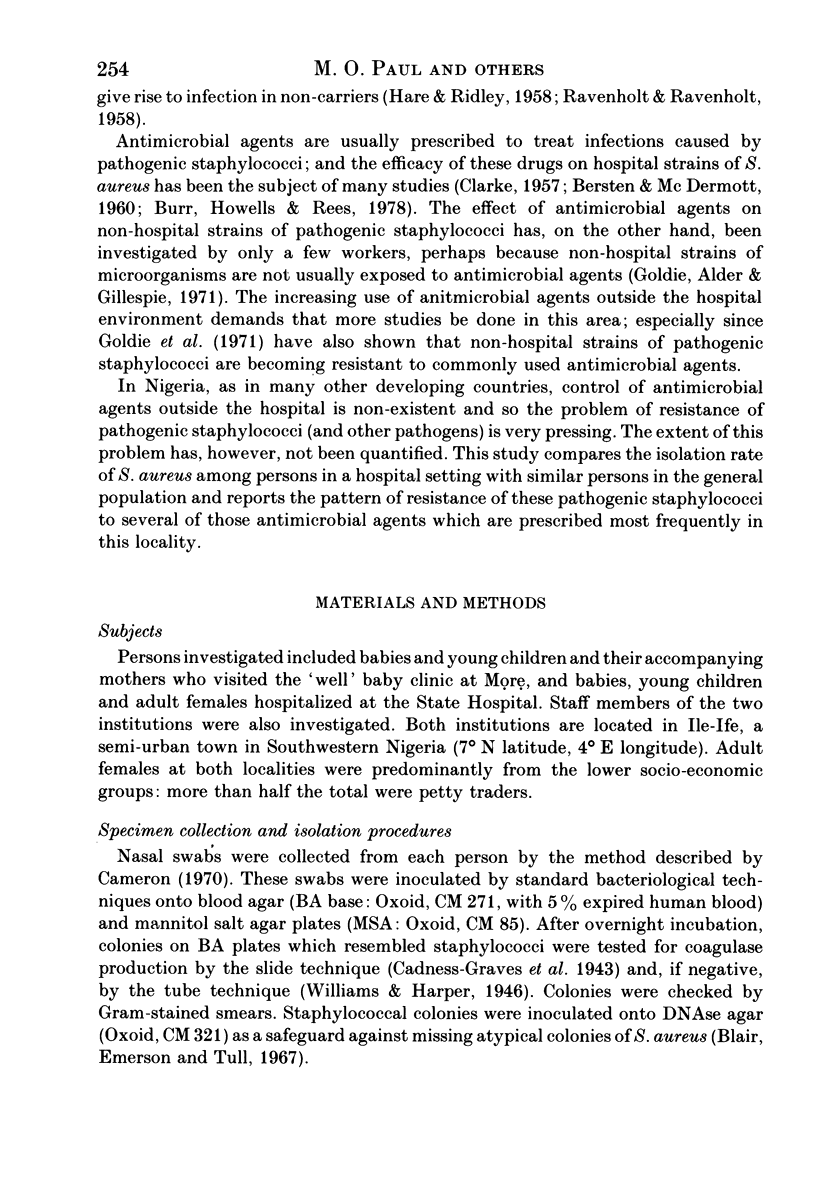
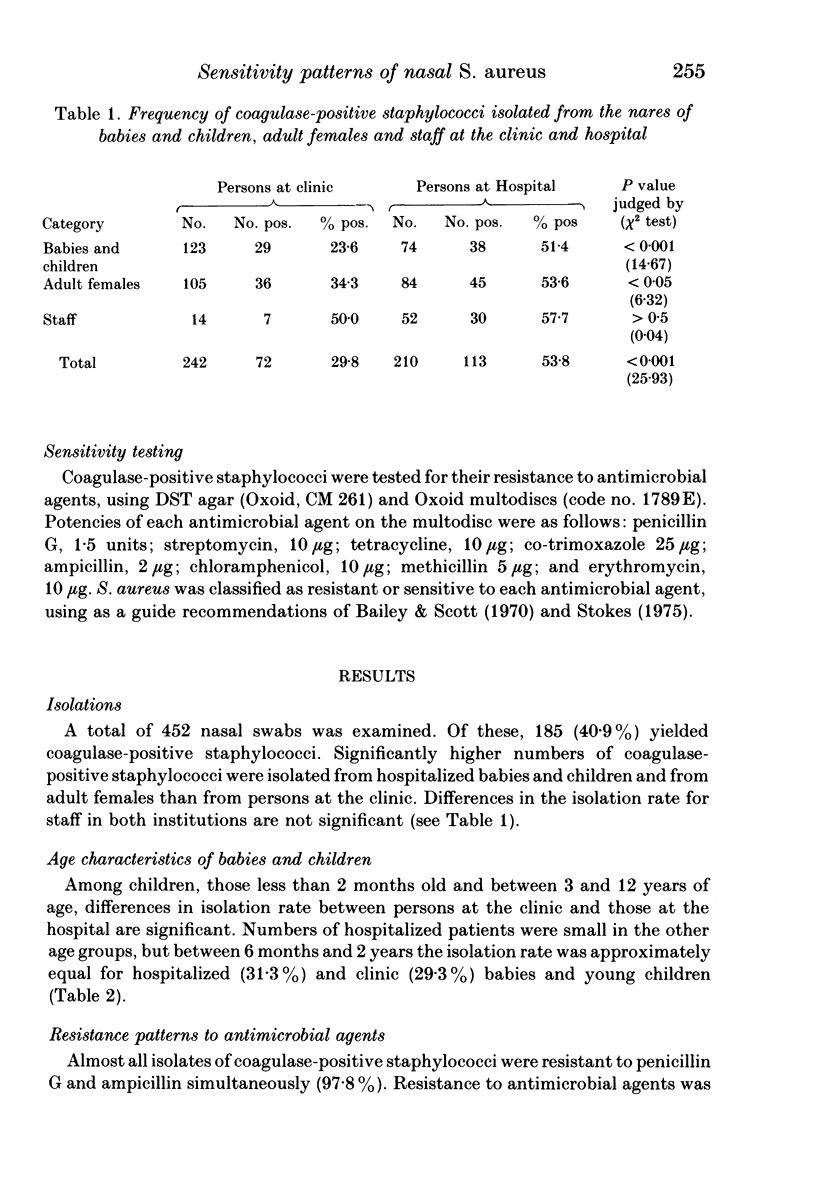
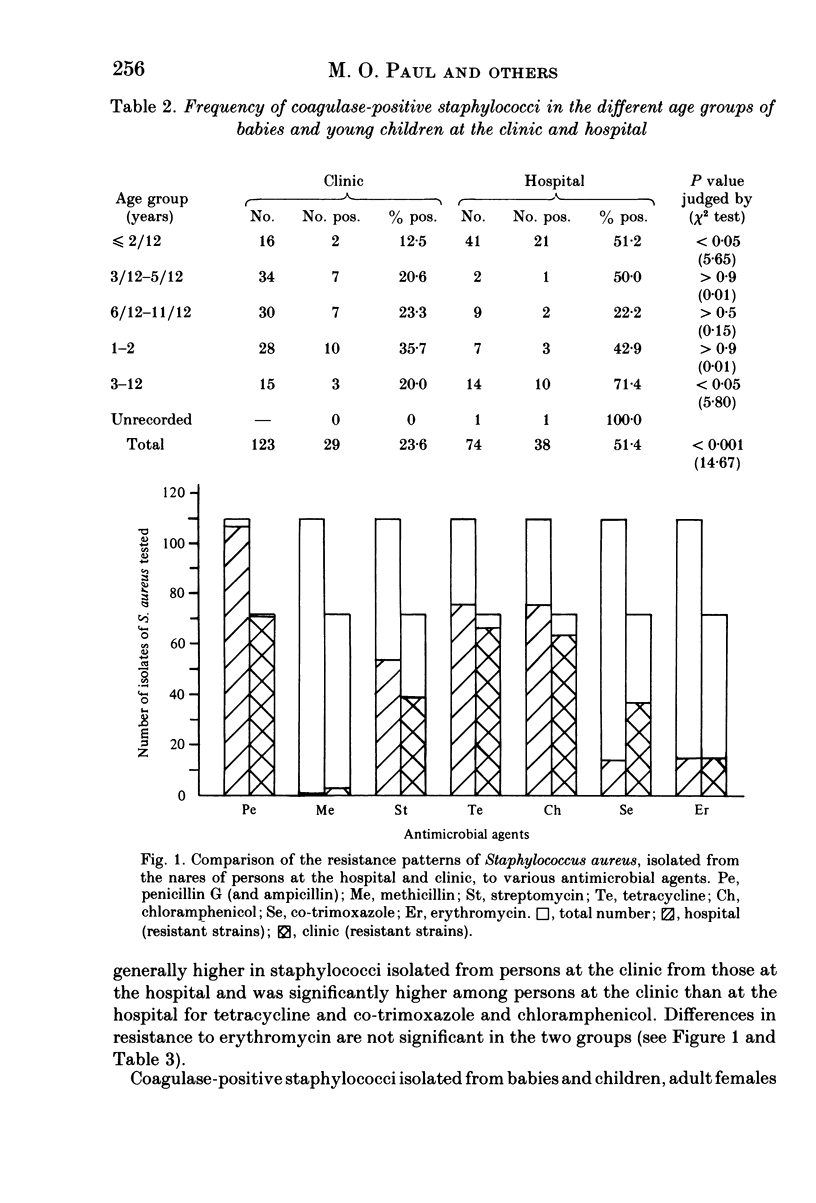
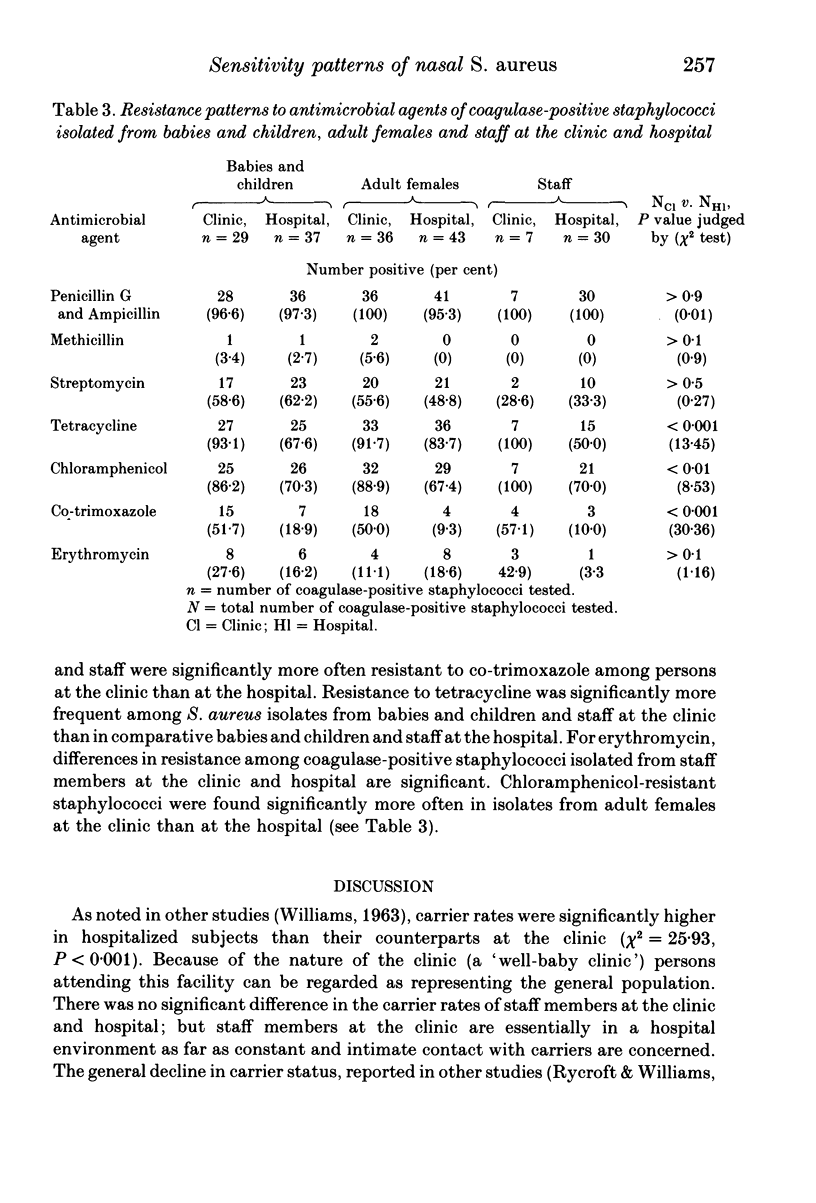
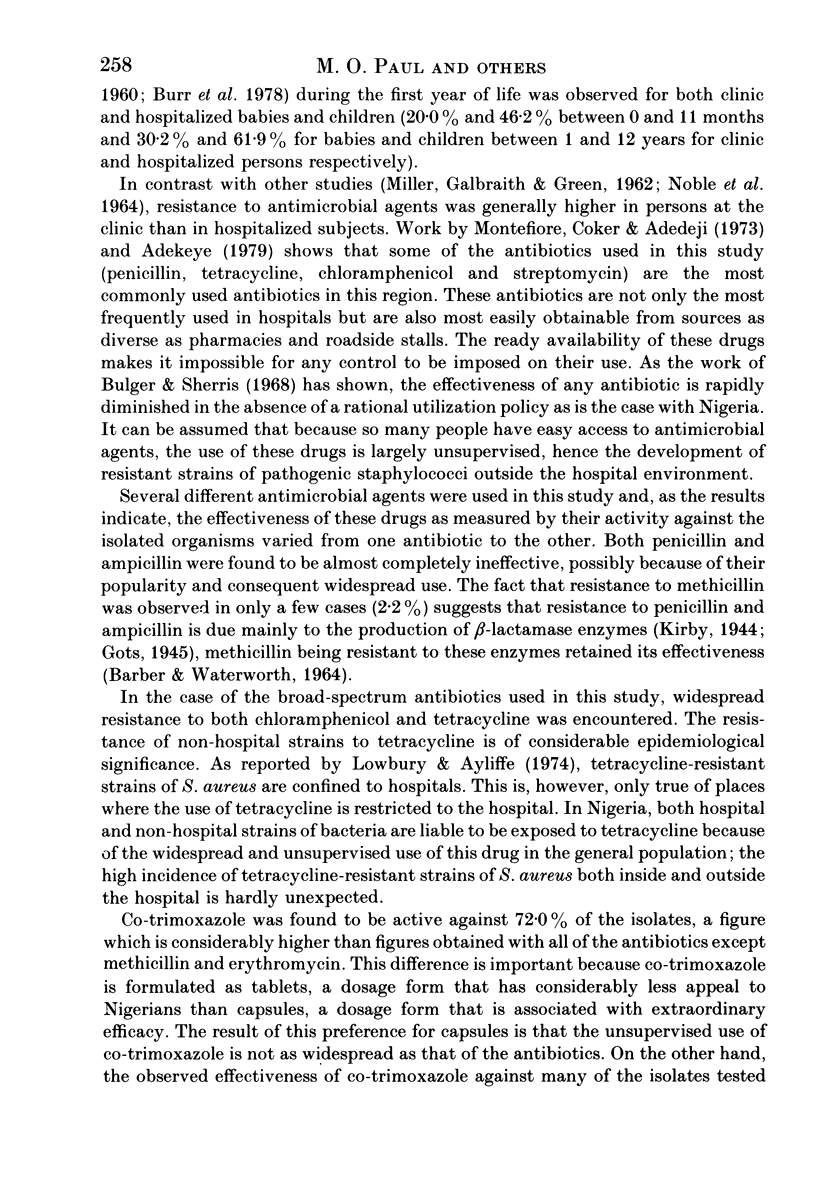
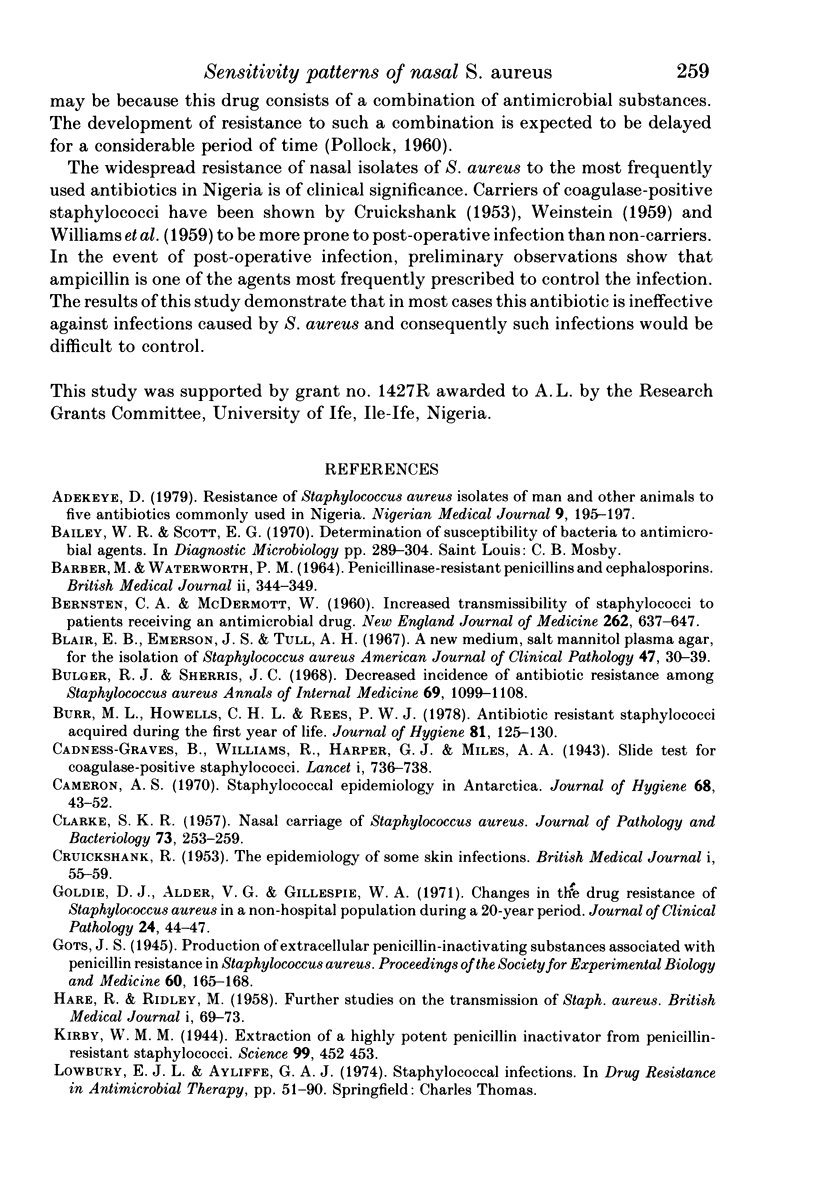
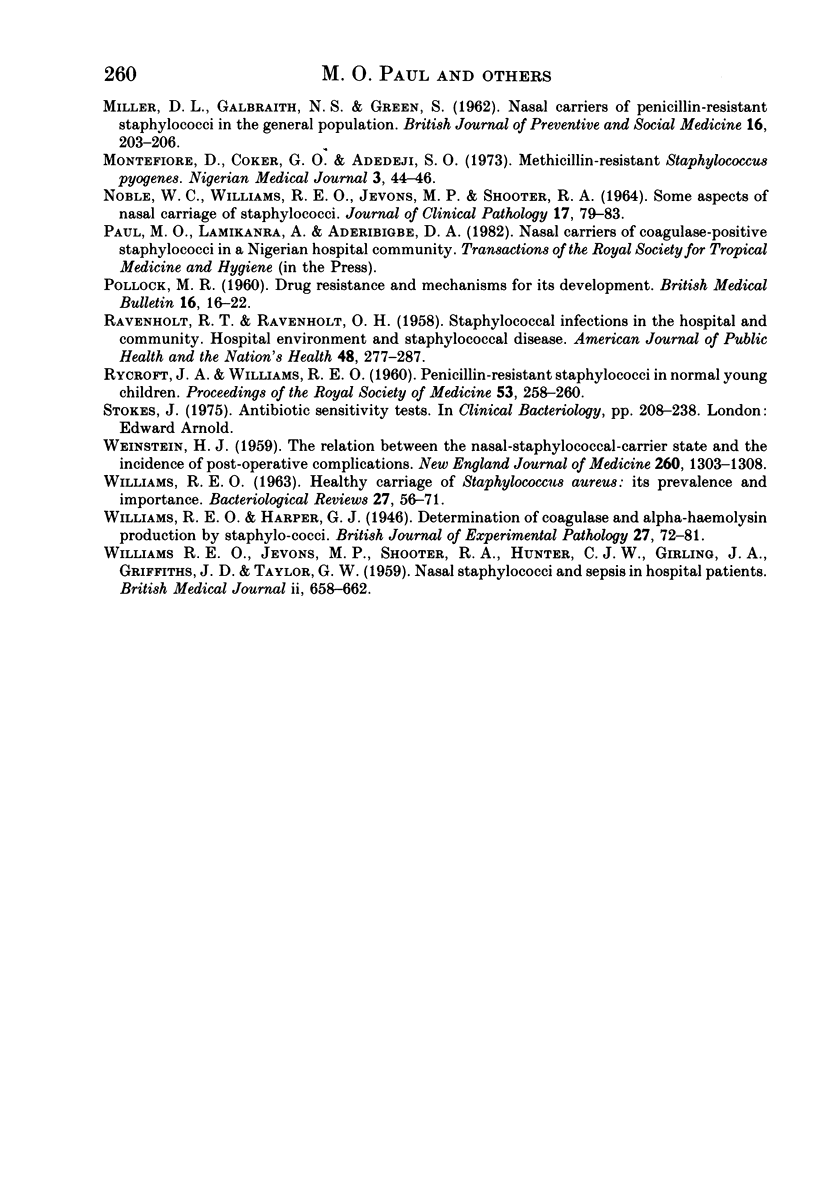
Selected References
These references are in PubMed. This may not be the complete list of references from this article.
- BARBER M., WATERWORTH P. M. PENICILLINASE-RESISTANT PENICILLINS AND CEPHALOSPORINS. Br Med J. 1964 Aug 8;2(5405):344–349. doi: 10.1136/bmj.2.5405.344. [DOI] [PMC free article] [PubMed] [Google Scholar]
- BERNTSEN C. A., McDERMOTT W. Increased transmissibility of staphylococci to patients receiving an antimicrobial drug. N Engl J Med. 1960 Mar 31;262:637–642. doi: 10.1056/NEJM196003312621301. [DOI] [PubMed] [Google Scholar]
- Blair E. B., Emerson J. S., Tull A. H. A new medium, salt mannitol plasma agar, for the isolation of Staphylococcus aureus. Am J Clin Pathol. 1967 Jan;47(1):30–39. doi: 10.1093/ajcp/47.1.30. [DOI] [PubMed] [Google Scholar]
- Bulger R. J., Sherris J. C. Decreased incidence of antibiotic resistance among Staphylococcus aureus. A study in a university hospital over a 9-year period. Ann Intern Med. 1968 Dec;69(6):1099–1108. doi: 10.7326/0003-4819-69-6-1099. [DOI] [PubMed] [Google Scholar]
- Burr M. L., Howells C. H., Rees P. W. Antibiotic resistant staphylococci acquired during the first year of life. J Hyg (Lond) 1978 Aug;81(1):125–130. doi: 10.1017/s0022172400053821. [DOI] [PMC free article] [PubMed] [Google Scholar]
- CRUICKSHANK R. The epidemiology of some skin infections. Br Med J. 1953 Jan 10;1(4801):55–59. doi: 10.1136/bmj.1.4801.55. [DOI] [PMC free article] [PubMed] [Google Scholar]
- Cameron A. S. Staphylococcal epidemiology in Antarctica. J Hyg (Lond) 1970 Mar;68(1):43–52. doi: 10.1017/s0022172400028485. [DOI] [PMC free article] [PubMed] [Google Scholar]
- Goldie D. J., Alder V. G., Gillespie W. A. Changes in the drug resistance of Staphylococcus aureus in a non-hospital population during a 20-year period. J Clin Pathol. 1971 Feb;24(1):44–47. doi: 10.1136/jcp.24.1.44. [DOI] [PMC free article] [PubMed] [Google Scholar]
- HARE R., RIDLEY M. Further studies on the transmission of Staph. aureus. Br Med J. 1958 Jan 11;1(5062):69–73. doi: 10.1136/bmj.1.5062.69. [DOI] [PMC free article] [PubMed] [Google Scholar]
- Kirby W. M. EXTRACTION OF A HIGHLY POTENT PENICILLIN INACTIVATOR FROM PENICILLIN RESISTANT STAPHYLOCOCCI. Science. 1944 Jun 2;99(2579):452–453. doi: 10.1126/science.99.2579.452. [DOI] [PubMed] [Google Scholar]
- Montefiore D., Coker G. O., Adedeji S. O. Methicillin resistant staphylococcus pyogenes. Niger Med J. 1973 Jan;3(1):44–47. [PubMed] [Google Scholar]
- NOBLE W. C., WILLIAMS R. E., JEVONS M. P., SHOOTER R. A. SOME ASPECTS OF NASAL CARRIAGE OF STAPHYLOCOCCI. J Clin Pathol. 1964 Jan;17:79–83. doi: 10.1136/jcp.17.1.79. [DOI] [PMC free article] [PubMed] [Google Scholar]
- POLLOCK M. R. Drug resistance and mechanisms for its development. Br Med Bull. 1960 Jan;16:16–22. doi: 10.1093/oxfordjournals.bmb.a069785. [DOI] [PubMed] [Google Scholar]
- RAVENHOLT R. T., RAVENHOLT O. H. Staphylococcal infections in the hospital and community: hospital environment and staphylococcal disease. Am J Public Health Nations Health. 1958 Mar;48(3):277–287. doi: 10.2105/ajph.48.3.277. [DOI] [PMC free article] [PubMed] [Google Scholar]
- RYCROFT J. A., WILLIAMS R. E. Penicillin-resistant staphylococci in normal young children. Proc R Soc Med. 1960 Apr;53:258–260. [PMC free article] [PubMed] [Google Scholar]
- WEINSTEIN H. J. The relation between the nasal-staphylococcal-carrier state and the incidence of postoperative complications. N Engl J Med. 1959 Jun 25;260(26):1303–1308. doi: 10.1056/NEJM195906252602601. [DOI] [PubMed] [Google Scholar]
- WILLIAMS R. E. Healthy carriage of Staphylococcus aureus: its prevalence and importance. Bacteriol Rev. 1963 Mar;27:56–71. doi: 10.1128/br.27.1.56-71.1963. [DOI] [PMC free article] [PubMed] [Google Scholar]
- WILLIAMS R. E., JEVONS M. P., SHOOTER R. A., HUNTER C. J., GIRLING J. A., GRIFFITHS J. D., TAYLOR G. W. Nasal staphylococci and sepsis in hospital patients. Br Med J. 1959 Oct 10;2(5153):658–662. doi: 10.1136/bmj.2.5153.658. [DOI] [PMC free article] [PubMed] [Google Scholar]


